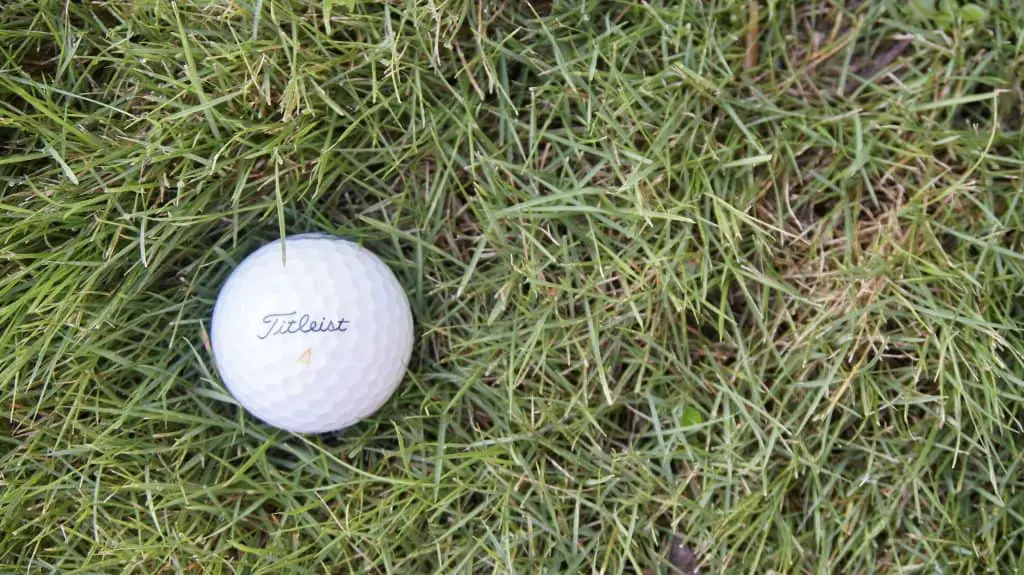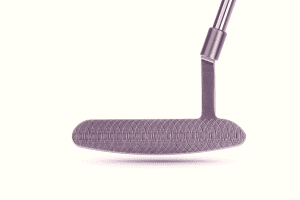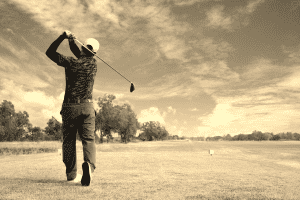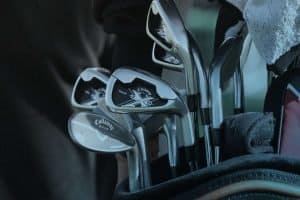When Phil Young coaxed MIT graduate Frank Bommer to head up Acushnet Golf Division, he had one goal. Develop the “highest quality and best performing golf ball.” 90-years later, and Titleist continues to do just that. In this post, I conduct a Titleist Tour Soft review and look at it’s construction, performance, and main competitors.
Although it is not as popular as its cousin, the Pro V1, the Tour Soft has much to be proud of. Titleist suggests that the Tour Soft offers exceptional distance and added greenside control for mid-handicap golfers. Let’s dive in on the details below!
Titleist Tour Soft Complete Review
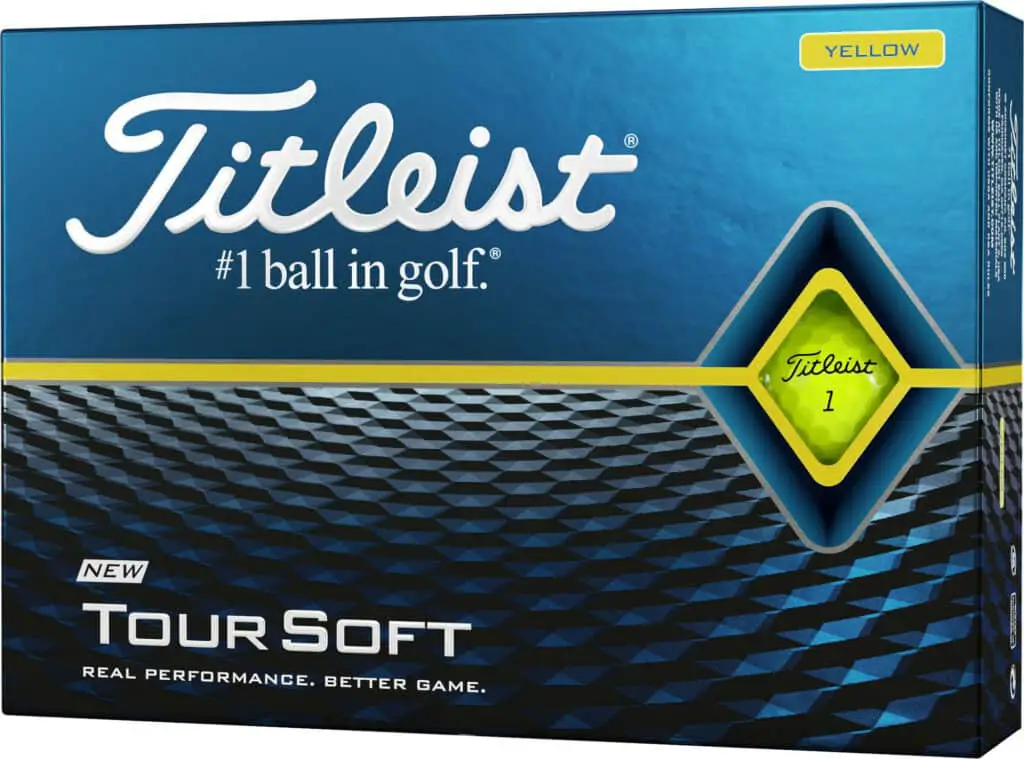
Pros
- Maximum distance
- Responsive feel
- Receptive feel
- Low long game spin
- Accelerated ball speed
- Mid-flight
Cons
- Limited short game spin
Check the price on the Titleist Tour Soft at Dicks Sporting Goods here.
Construction and Technology
2-Piece Construction
The Tour Soft is a 2-piece construction consisting of an enlarged rubberized core and an ionomer cover. This design delivers a lower compression rating to help moderate swing speeds maximize long game distance. If you don’t tend to crush the ball, this lower compression design does do quite a bit to enhance distance.
Largest Titleist Core
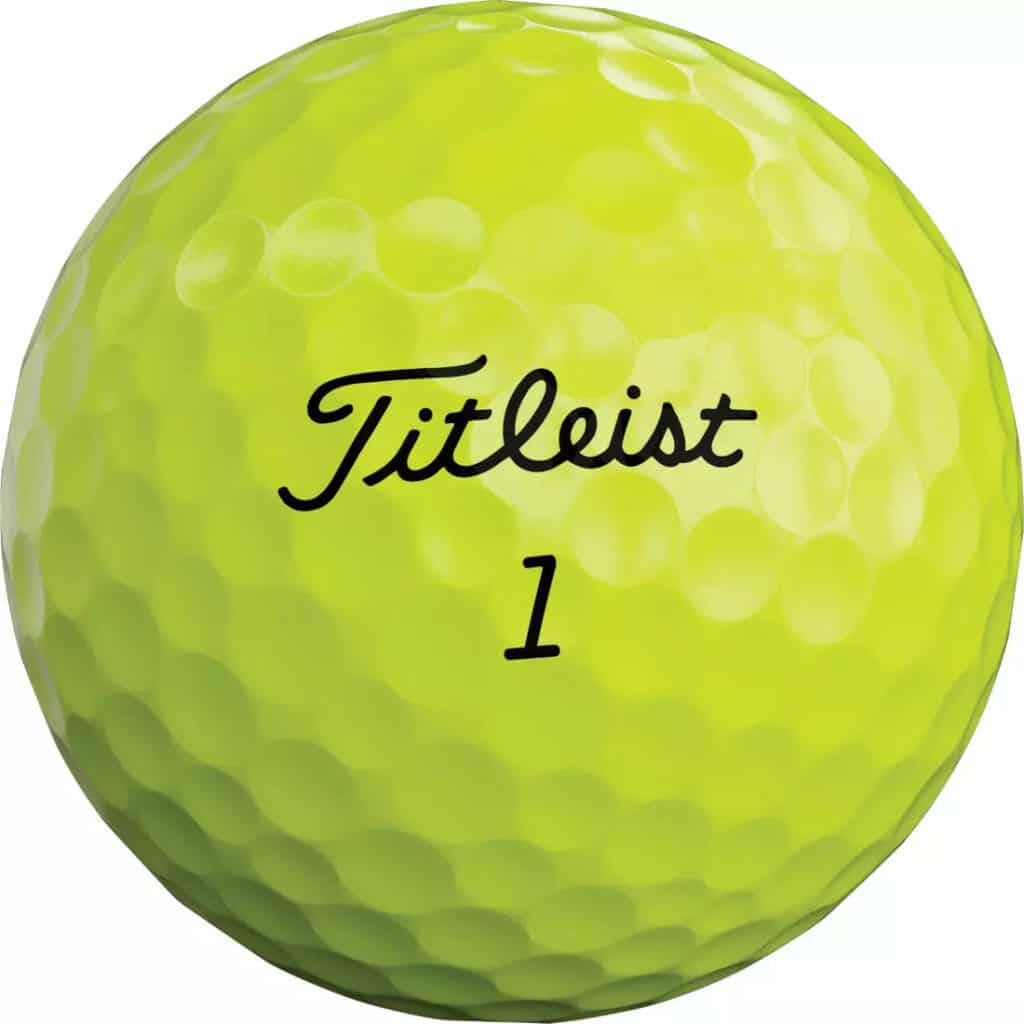
Titleist proudly advertises that the Tour Soft contains their largest core design to date. The engineers employed the Technology-Driven Core to maximize ball speed and reduce the compression rating.
Furthermore, the core is built to improve the energy transfer from the clubface to the ball. In other words, it helps boost your coefficient of restitution (C.O.R) and accelerates your ball speed. Therefore, the soft feeling ball launches high and long for consistent carry distance.
Thin 4CE Grafted Cover
The ionomer cover on the Tour Soft is built for distance and durability. The firmer material limits backspin rpm on longer shots to optimize your long game distance. In addition, the 4CE Grafted cover assists the large core to increase ball speed at impact.
The combination of low spin and rapid ball speed delivers consistent distance on long game shots. It may not be the longest golf ball on the market, but it is consistent and trustworthy.
Moreover, the ionomer cover offers increased durability over urethane. As a result, your ball can withstand a longer beating without scuffing. As a result, it is ideal for the average golfer who does not lose many golf balls during a round and will serve you well for more than 9-holes.
The downside of this durable material arises around the greens. Greenside, I found that I had a little less spin and control than I do with other premium golf balls, like the Pro V1. For many golfers this won’t be a big deal, but as you start to become more precise in your short game efforts, the lack of short game spin is a factor.
Spherically Tiled Dimple Pattern
Titleist employed a spherically tiled dimple pattern to deliver a penetrating ball flight for consistent distance and accuracy. 342 dimples line the ball’s cover, and work to stabilize your ball in flight and reduce drag.
The result is a penetrating ball flight for added yardage on long shots, with a slightly lower trajectory with driver, woods and long irons. With a mid or short iron in hand, the Tour Soft was able to keep plenty of height in my approaches to greens.
Alignment Aid
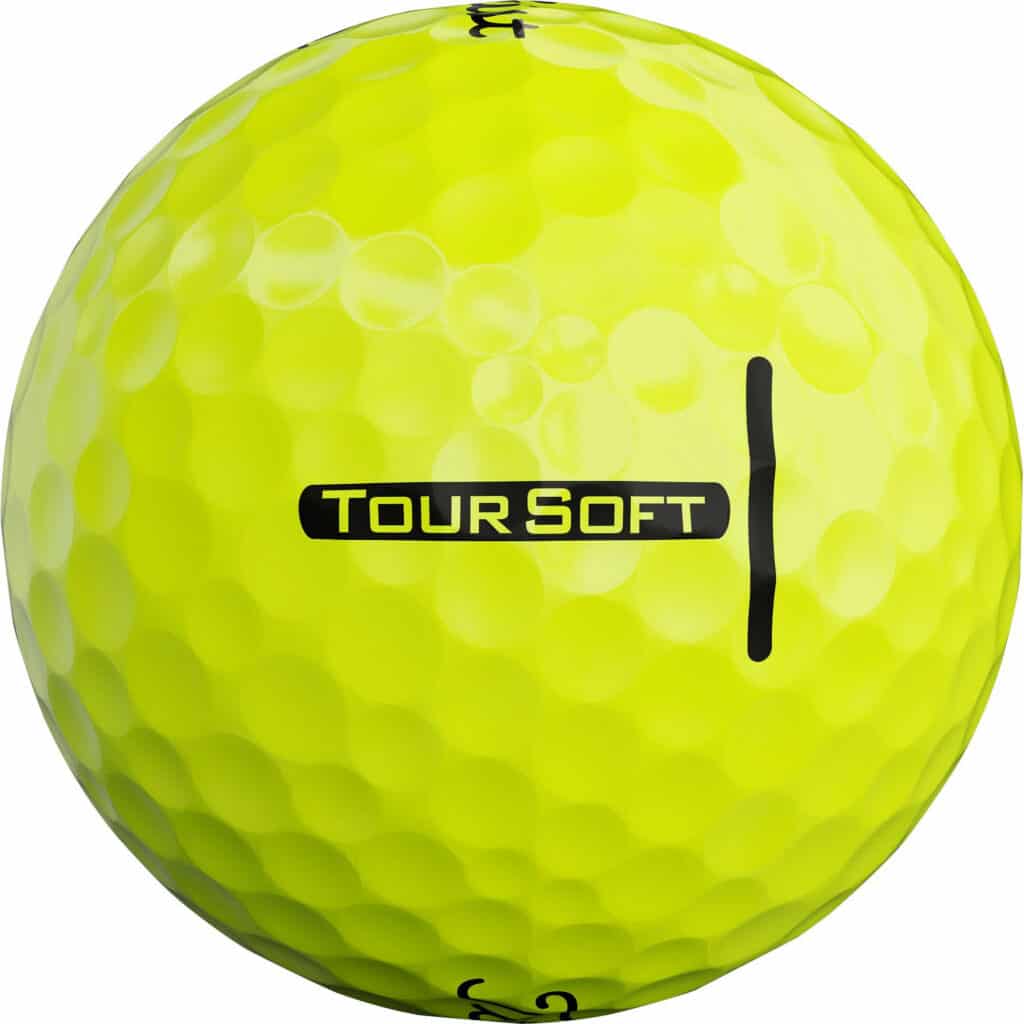
An alignment aid doesn’t do too much for long game performance, but its presence improves your accuracy. Before teeing off or putting, you can use the line to ensure that your clubface and ball are aiming at your intended target.
Furthermore, using the line of the ball helps you position the ball central for optimal results. Bryson Dechambeau’s coach Mike Schy explains the importance of center of gravity (CG) in golf balls and why you should line it up correctly before each shot.
Obviously, in tournaments where the play it as it lies rule is in place, you cannot do that on the fairway, but you can use it to your advantage on the tee box and green.
What To Consider for your next golf ball
Handicap
Your handicap is an excellent indicator of the type of golf ball that you should use. This is true for two reasons. Firstly, it reduces wasteful expenditure on golf balls. Secondly, it ensures that you use the optimal ball for your swing.
Let me elaborate. If you are a 36-handicapper who loses 6 golf balls per round, it makes no sense to drop approximately $50 on a dozen premium balls.
If you purchase a box of Pro V1s, you may throw away half a Benjamin every second round on balls. Whether you have premium or entry-level golf balls, you will still lose the same amount every round. Therefore, it is sensible to purchase budget options and save the remaining cash for lessons.
The next issue is to do with your swing. High handicappers may produce less ball speed than more advanced golfers, which requires a different ball design. Golfers in this bracket are better suited to low compression golf balls that help slower swingers generate increased velocity.
Moreover, high handicappers need a forgiving golf ball that encourages straight ball flight for better accuracy.
Conversely, lower handicappers may prompt faster ball speed and require products with less compression. Plus, they might seek a golf ball that promotes workable flight to shape the ball as they please.
Construction
The next step is to identify the construction that best suits your game. Golf balls typically feature a 2, 3, 4, or 5-piece design.
The more pieces, the higher the compression rating is, and the more it suits faster swinging golfers. In addition, more pieces produce a better all-around golf ball. That means that it lowers spin and increases ball speed on long shots. Conversely, it maximizes spin and greenside control on your short game.
Given the magical features of these balls, they usually fetch a premium, which is not feasible for the average high handicap golfer.
Mid-swing speeds are best off with a 3-piece golf ball that offers adequate spin and optimal distance potential. Lastly, slower swingers are advised to stick to 2-piece constructions. Those dimples carry a lower compression rating, designed to increase ball speed, launch, and distance.
Compression
A compression rating describes how much the ball compresses at impact. Lower scores signify that a golf ball provides increased compression assistance at impact to prompt faster ball speed and generate a high, powerful launch.
2-piece golf balls tend to carry the lowest compression ratings, while 4 and 5-piece designs have the highest. That means that a 2-piece ball with a lower compression rating is best suited to slower swing speeds. Golfers in this bracket require all the assistance they can get to maximize the yardage on their shot.
Conversely, a 4 or 5-piece golf ball features a high compression rating. As a result, it provides little assistance at impact and is better designed for golfers with faster swing speeds.
Cover
There are two predominant golf ball cover materials, urethane and ionomer.
Urethane is a softer material found on premium-priced golf balls. It is known for its ability to grip into the grooves of your wedges and prompts excellent spin and control. Unfortunately, urethane is not the most durable option.
Conversely, ionomer is a harder polymer that is more durable than urethane. Ionomer is built to increase your distance and lower spin. In addition, they tend to last longer without scuffing. These golf balls are also more affordable than urethane designs.
Therefore, high and mid handicappers are advised to stick to ionomer covers. They optimize your distance and do not burn a hole in your pocket.
Flight
Think about the type of ball flight that you desire. Are you after a golf ball that enables you to induce a draw or fade? Or, do you prefer a design to provide straighter flight?
My advice to mid and high handicappers is to stick to the straight flying golf ball. Yes, it may seem boring and repetitive. But trust me, straight flight is far superior to a ball that consistently hooks or slices out of bounds.
Spin
The final feature to consider is spin. We all want our golf balls to restrict spin on long game shots for increased ball speed and distance. However, around the green, that is a different story. We need increased levels of spin for added control around the dancefloor.
However, golf balls that do everything tend to cost an arm and a leg. That is why they are better for superior golfers. My advice to mid and high handicap players is to look for an ionomer cover golf ball that promotes a high flight and soft landing on the greens.
That is how you enjoy optimal distance and some control without breaking the bank. If you are a low handicapper, then you can justify splurging on urethane-covered golf balls that go long and spin strong.
Titleist Tour Soft Alternatives
Titleist Pro V1

Arguably the most famous ball in golf. The Pro V1 is a premium 3-piece ball with a urethane cover. A 2.0 ZG Core boosts the energy transfer at impact for maximum long game distance.
Furthermore, a high flex ionomer casing accelerates ball speed and lowers spin on high-impact shots. Therefore, you enjoy ample distance on long game strikes. A cast urethane elastomer cover generates optimal spin on shots around the green. That boosts your short game control.
Lastly, a 388 tetrahedral dimple design stabilizes your ball during flight for a piercing journey. Overall, the Pro V1 is an ideal alternative to the Tour Soft for lower handicappers.
Check the price for the Titleist Pro V1 on Amazon here.
Titleist TruFeel

The Titleist TruFeel is the best budget alternative to the Tour Soft. This 2-piece golf ball is designed to maximize distance for slower swingers. Plus, its affordable price tag is ideal for high handicappers on a budget.
Its low compression core boosts energy transfer at impact to accelerate ball speed and lower spin. The TruFlex ionomer cover further reduces backspin and increases ball speed to ensure added distance on long shots.
The TruFit aerodynamics design lowers drag and encourages a high flying ball. This results in a stable flight leading to increased carry distance. Furthermore, the high flight causes the ball to land quickly on approach. However, spin is limited with the TruFeel.
Check the price for the Titleist TruFeel on Amazon here.
Titleist Velocity

Titleist Velocity golf balls fall into the mid-range category and are pure distance golf balls. These are ideal for mid and high-handicappers focused on distance above all.
The LSX Core works to produce rapid ball speed, and long game strikes. Its purpose is to maximize your distance. Furthermore, the NAZ+ ionomer further bolsters speed at impact to maintain yardage on all strikes.
Finally, a spherically-tiled 350 octahedral dimple design limits drag and encourage a high launch. Therefore, you enjoy a consistently high flight for increased carry distance.
Check price for the Titleist Velocity on Amazon here.
Final Thoughts
That concludes our Titleist Tour Soft review. This golf ball maximizes ball speed, low long game spin, and a piercing flight.
The downside of the Tour Soft is that it does not deliver optimal spin around the green causing you to relinquish some control. However, it does land quickly on approach for superior results with your mid to long irons.
Overall, the Tour Softs are a suitable golf ball for mid-handicappers with moderate swing speeds. If you are looking for a durable, moderately priced distance ball, take a closer inspection here.

